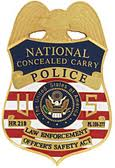
LEOSA Updates on Concealed Carry on AF Installations
Mr Michael Glunk, AFSFC, JBSA-Lackland AFB, TX
11 December 2015
BLUF (Bottom Line Up Front): Concealed Carry has been authorized for ALL LEOSA Credentialed Individuals on ALL AF Installations and property. Interim Change (IC) 3 to Air Force Instruction 31-101, Integrated Defense, was signed by HAF A4S on 3 Dec 15 and sent to AF Publications. Once it is published (30-60 days) it will be implemented across the AF. The verbiage in IC 3 basically states the following: 8.4.2.4.1.1. "...Concealed carry of POFs on AF installations and property, unless authorized by competent authority IAW AFI 31-117, paragraph 2.1.3, will be limited to LEOSA credentialed personnel, credentialed civilian law enforcement personnel in performance of official duties, and credentialed agents assigned to Defense Criminal Investigative Organizations." However, IC further adds: "Additionally, these personnel may carry POFs inside federal facilities that are under the control of the installation if authorized by the Installation Commander as a "lawful purpose"... and "Installation commanders will develop a list of POF prohibited locations, record in the IDP, and ensure placement of signs at each location. Installation commanders should consult with their local Staff Judge Advocate to determine prohibited locations." BL: Those people identified to be authorized to carry Concealed cannot take their firearm into any facilities unless it is approved by the Installation Commander (i.e. You have to keep your weapon in your car).
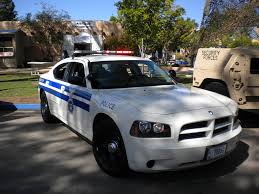 Air Force Expands Base Security
Air Force Expands Base Security
Air Force Association, Daily Report, 4 Dec 2015
The Air Force has implemented a series of new steps to improve base security following an order from Defense Secretary Ash Carter to improve the safety of military facilities following the July shooting at a recruiting center in Chattanooga, Tenn. The Air Force has increased the number of armed security forces on bases through multiple programs, expanded force protection measures at off-installation facilities, and is working on a long-term mass notification system, Air Force Secretary Deborah Lee James said in a Dec. 3 release. "Commanders remain fully empowered and are expected to make arming decisions for off-installation facilities consistent with existing authorities," James said. "They are also best positioned to balance the mission with the threat and determine the appropriate level of security required for a given facility." As a part of the new protocols, off-base facilities need to establish and maintain emergency action plans, which have to be practiced at least twice per year, according to the release.
SecAF implements Additional Security Measures After Attacks
Secretary of the Air Force Command Information / Official Website of the U.S. Air Force, Published 3 Dec 2015
WASHINGTON (AFNS) -- In response to the defense secretary’s call to improve the security and force protection of defense personnel after the tragic events in Chattanooga, Tennessee, Air Force Secretary Deborah Lee James introduced more stringent security measures to reduce the possibility of violent acts directed toward Airmen on and off installations.
"In the wake of the tragedies at Fort Hood, the Navy Yard and Chattanooga, we worked closely with DOD, the Joint Staff and other services to identify and provide effective and long-lasting force protection enhancements,” James said. “We take the safety of our service members, civilians and their families who support them seriously and continue to examine ways to make our installations and facilities safer.”
Defense Secretary Ash Carter initially charged the secretaries of the military departments with improving physical and procedural security, mass warning and alert notification capabilities and augmenting security.
“As part of this commitment, we increased the number of armed security forces on base through several arming programs, are enhancing force protection measures at off-installation facilities, and are working on long-term mass notification systems,” James said. “Commanders remain fully empowered and are expected to make arming decisions for off-installation facilities consistent with existing authorities. They are also best positioned to balance the mission with the threat and determine the appropriate level of security required for a given facility.”
In addition, off-installation facilities will establish and maintain emergency action plans and practice these plans through training exercises at least twice a year.
“We are working with (the Office of the Under Secretary of Defense for Intelligence) toward an armed contract solution for off-installation facilities like our recruiting stations, and we are strengthening relationships with local law enforcement agencies and partnering on exercises to ensure all personnel are prepared to respond to future incidents,” James said. “These efforts are designed to increase the safety of our service members, their families and the communities we live in and support."
AFSFA Security Forces Magazine Editors Note: Read more about this in BGen Jamerson's column in the Sep-Dec 2015 issue.
Grace: Military recruit dog Rocky flunked his tests — twice — but Offutt teacher gave him a 2nd chance
By Erin Grace, World-Herald columnist | Updated 6 days ago
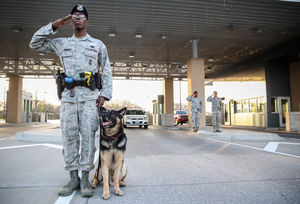
Staff Sgt. Elbert Lee Foreman Jr., with a blue Kong dog toy on his belt, with Rocky, a 5-year old German shepherd, at Offutt Air Force Base. Rocky is an explosive-detector and patrol dog on base. “He’s an awesome dog,” Foreman said. “A really good dog.” Photo by Megan Smith, The World-Herald
A young U.S. military recruit named Rocky showed promise at the start. But when he started training at a Texas base and flunked his tests — twice — Rocky’s would-be military career seemed all but over.
Then a teacher at Offutt Air Force Base saw potential. And the German shepherd came to Bellevue for a second chance.
This four-legged student remains a work in progress, but he is an official military working dog. And his story shows that, like the two-legged kind, students of all species can benefit from the right teacher and the right kind of setting.
In Rocky’s case, the right teacher was a dog-loving, dog-knowing human, Master Sgt. Michael Iverson. Iverson’s a believer in so-called lost causes. He’s a teacher who thinks that if the student flunks, maybe it’s the teacher’s fault.
Rocky’s story began in 2010 in the Netherlands, where he was born to a breeder who works with the U.S. Department of Defense.
The world’s most powerful military has a lot of space-age tools like drones at its disposal. But when it comes to sniffing out an explosive chemical or helping a guard patrol the base, just about nothing beats a trained dog.
The Air Force supplies all the service branches with trained dogs — usually German shepherds or, increasingly, Belgian Malinois.
For reasons obvious to anyone who has ever owned a puppy, the Air Force does not typically start with a cute, cuddly, chewing, peeing, Tasmanian devil. Instead, the Air Force waits to bring the dog home until breeders have done the dirty work of civilizing dogs. So by the time the Air Force paid about $2,000 for Rocky at the end of 2011, Rocky could sit, he could heel, he could follow basic dog commands.
Rocky passed initial tests. Then, like human recruits, he had to go through boot camp — at the 37th Training Wing of Lackland Air Force Base, part of Joint Base San Antonio in Texas.
In 2012, Rocky had his first big test of his training. But he failed.
More precisely, according to his training record, Rocky “was inconsistent in basic obedience and controlled aggression tactics.”
In other words, Rocky was a softie. Military working dogs have to be able to bite someone. Rocky couldn’t — or wouldn’t — cross that line at Lackland.
His trainers there kept working with him. He passed training to detect explosives, but failed patrol work. He was even given an extra 38 days of training, which helped. Rocky became a better listener. He didn’t go berserk when a gun was fired at close range. Yet Rocky still couldn’t attack.
His final report card at Lackland sounded a bit hopeless.
“Rocky shows insufficient drive and power,” reads that September 2013 report.
Rocky was going to be limited to explosive detection work — or sent away for adoption. Dogs that retire or wash out of the military are available for adoption as pets.
That’s when Iverson stepped in.
Iverson has spent most of his 16 years of Air Force duty dealing with dogs. He is kennel master for the 55th Security Forces Squadron, based at Offutt, which normally has eight dogs. Before that role, Iverson had been a trainer at Lackland. And before that, he was a South Dakota kid who
spent time on ranches with plenty of working dogs.
Iverson knew dogs. He owned dogs. He loved dogs. And he believed in the training potential of dogs and in his abilities as a trainer.
Iverson had needed another dog for the 55th. So he called Lackland to get his name on a waiting list for a fully-trained dog. He could wait for one, Lackland told him. Or he could try his luck with a borderline student named Rocky.
“We needed a dog,” Iverson said. “I like the challenge.”
As it turned out, Iverson was heading to San Antonio anyway that fall for the dedication of a new war dog memorial. While there, he looked at Rocky’s records, which, depending on your perspective, were either half-terrible or half-good. Iverson met Rocky and saw “above-average” behavior. He was sold.
Iverson had driven to Texas in his Ford pickup by himself. He drove home with Rocky.
In Rocky, Iverson saw smarts, ability — and utter confusion. In those early days, Rocky seemed unsure, nervous and afraid of making a mistake.
Who could blame him? At times, he is asked to follow commands related to his specific training, like detecting a hazardous substance. But he is also expected to rely on animal instinct if a threat is imminent. In those scenarios, he needs to act and act fast.
Iverson realized that he had to bond with Rocky and build his confidence. So he spent the initial weeks hanging out in Rocky’s kennel, walking Rocky all around the base and playing lots of fetch.
When Iverson realized how much Rocky loved an oblong rubber toy called a Kong, Iverson made it a reward. Sit? Kong. Down? Kong. Find the requisite hazardous substance? Kong. Iverson accompanied the toy with a hearty “Yes!” each time Rocky did something right.
As the dog’s bond and confidence grew, Iverson was able to work on aggression. A fellow trainer was designated the “bad guy” and was able to goad Rocky into protection mode. Iverson then taught Rocky how to trust his defensive instinct.
How well did he do?
Iverson took us outside. When Rocky heard the crack of a whip or was approached by an airman wearing a protective coat, he bared his teeth and reared up, clamping onto the airman’s arm with his steel-trap jaw. He did not show fear. He did show a willingness to bite.
Rocky is not officially certified in this area yet — but he’s close.
Iverson believes Rocky’s prior training involved too many people and too much change. Maybe he was confused. Maybe Rocky just needed a change of environment. Or maybe he just needed someone to believe in him.
But dealing with change is an important skill, especially for a military working dog, and Iverson has had to prepare Rocky for the array of handlers he’ll have over his career. So far, he is on his third handler, Staff Sgt. Elbert Lee Foreman Jr.ky’s prior training involved too many people and too much change. Maybe he was confused. Maybe Rocky just needed a change of environment. Or maybe he just needed someone to believe in him.
The 24-year-old from North Carolina has two dogs at home and got into the Air Force specifically to work with dogs.
Now the two are together during Foreman’s 12-hour shifts, which require patrolling part of the base’s 4,000 acres, responding to on-base police calls and conducting random vehicle searches.
During a recent shift, Foreman led Rocky through vehicle searches and a walk through the base exchange.
They took a quick break and the pair mirrored the usual, shamelessly gushy relationship between man and dog.
Foreman grinned at Rocky and took out a prize — the Kong.
“Down,” Foreman said, and Rocky obliged, earning praise, plus the toy.
Foreman bent down, rubbed Rocky’s face and said: “Yes, oooh-hoo-hoo. Good boy!”
“He’s an awesome dog,” said Foreman. “A really good dog.”
Nearby, Iverson watched them with a big grin. He felt like a proud teacher, watching an A student.
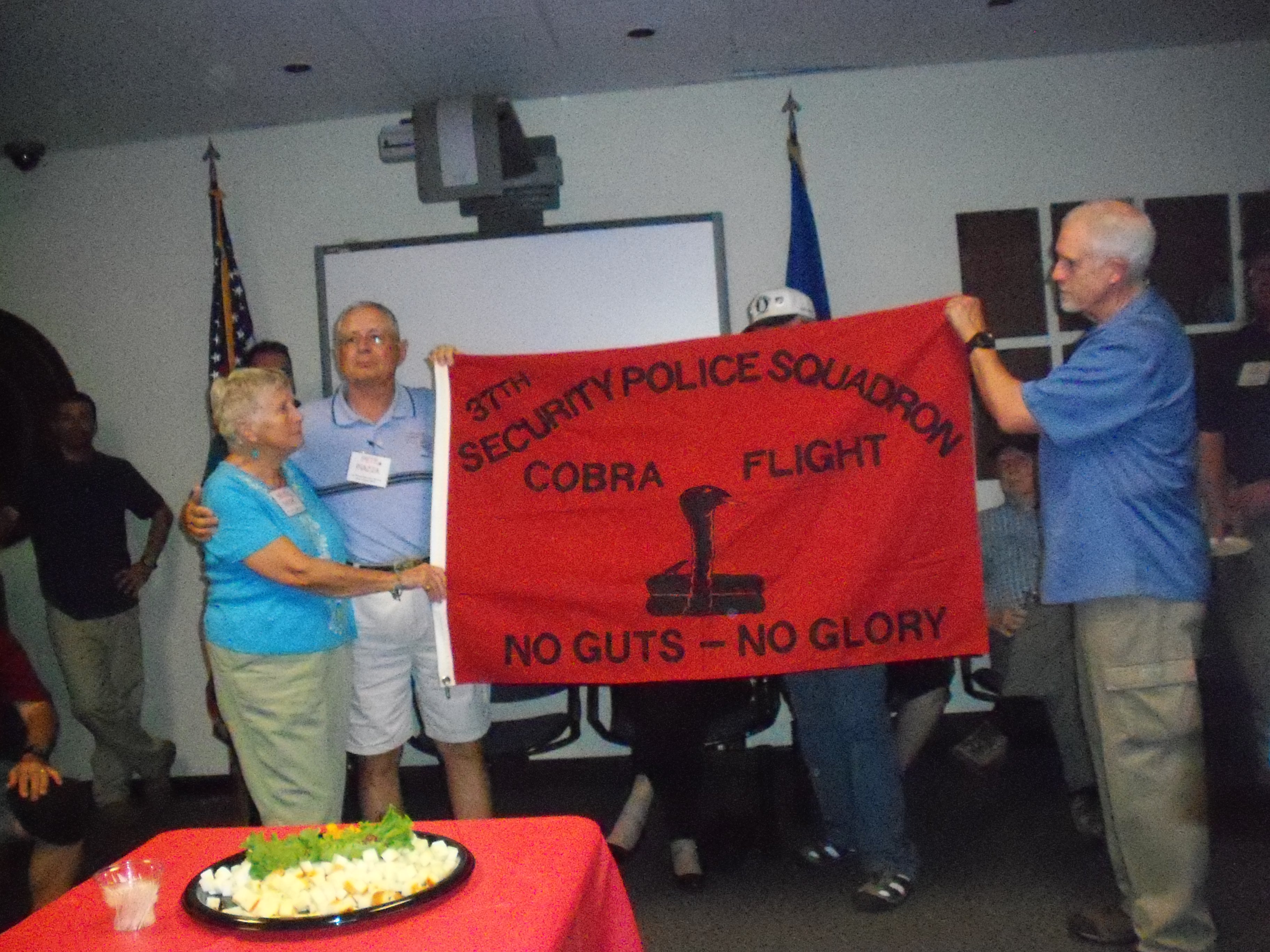 Cobra Flight Flag Presentation at 2015 AFSFA National Meeting
Cobra Flight Flag Presentation at 2015 AFSFA National Meeting
On 25 September 2015 as a part of the Air Force Security Forces Association annual meeting, Mrs. Helen Heiss, widow of Fritz Heiss, Col (Ret), presented the 37th Security Police Squadron (37 SPS) Cobra Flight flag from Phu Cat AB, RVN, to the Security Forces Museum. Col Heiss was the OIC of Cobra Flight in 1967-68 when it was formed at Phu Cat AB as part of the 37 SPS. At left with Mrs. Heiss is William (Pete) Piazza, SMSgt (Ret), who was Sector III Supervisor on Cobra Flight under the 12 SPS in 1970-71. John Probst, Col (Ret), executive director of AFSFA, is to the right. The Security Forces Museum curator, Nicholas Brace, read the story of the Cobra Flight flag to the attendees during the ceremony.
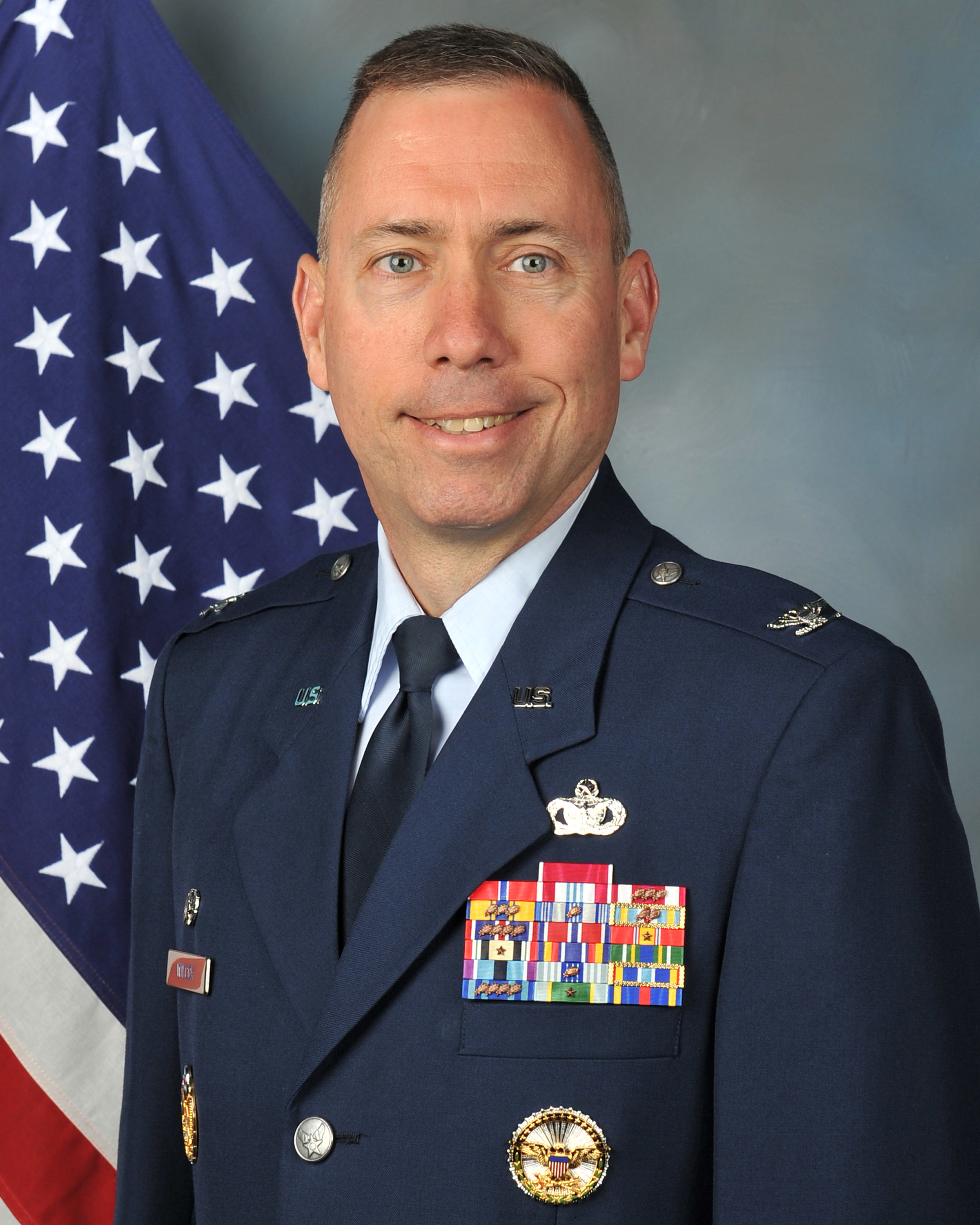 36 Air Force Colonels Nominated for First Star
36 Air Force Colonels Nominated for First Star
Air Force Times Staff 3:54 p.m. EST December 1, 2015
President Obama has nominated 36 Air Force colonels for promotion to brigadier general, Defense Secretary Ash Carter announced Tuesday. This follows the Nov. 23 announcement of the nominations of 20 Air Force officers for general officer promotions.
The latest colonels nominated to receive their first star:
•Kenneth Bibb Jr., currently vice commander, 618th Air Operations Center, Tanker Airlift Control Center, Air Mobility Command, Scott Air Force Base, Illinois.
•Angela Cadwell, executive officer to the deputy commander, U.S. European Command, Stuttgart-Vaihingen, Germany.
•Martin Chapin, deputy director, operations and plans, Headquarters U.S. Transportation Command, Scott Air Force Base, Illinois.
•James Cluff, senior military assistant to the undersecretary of defense for intelligence, Office of the Secretary of Defense, Pentagon.
•Charles Corcoran, commander, 3rd Wing, Pacific Air Forces, Joint Base Elmendorf-Richardson, Alaska.
•Sean Farrell, commander, 1st Special Operations Wing, Air Force Special Operations Command, Hurlburt Field, Florida.
•Chad Franks, senior executive officer to the vice chief of staff, Air Force headquarters, Pentagon.
•Alexus Grynkewich, chief, integration and planning, deputy chief of staff for strategic plans and requirements, Air Force headquarters, Pentagon.
•Timothy Haugh, commander, 480th Intelligence, Surveillance and Reconnaissance Wing, Air Combat Command, Joint Base Langley-Eustis, Virginia.
•Christopher Hill, deputy director of resource integration, deputy chief of staff for logistics, engineering, and force protection, Air Force headquarters.
•Eric Hill, special assistant to the commander, U.S. Special Operations Command, MacDill Air Force Base, Florida.
•Samuel Hinote, military assistant to the deputy secretary of defense, Office of the Secretary of Defense, Pentagon.
•William Holt II, commander, 352nd Special Operations Wing, Air Force Special Operations Command, Royal Air Force Mildenhall, United Kingdom.
•Linda Hurry, commander, 635th Supply Chain Operations Wing, Air Force Materiel Command, Scott Air Force Base, Illinois.
•Matthew Isler, commander, 12th Flying Training Wing, Air Education and Training Command, Joint Base San Antonio-Randolph, Texas.
•Kyle Kremer, executive officer to the commander, U.S. Transportation Command, Scott Air Force Base, Illinois.
•John Kubinec, senior special assistant to the Supreme Allied Commander, Europe, and commander, U.S. European Command, Brussels.
•Douglas Lamberth, vice superintendent, Air Force Academy, Colorado Springs, Colorado.
•Lance Landrum, director for colonel management, Deputy Chief of Staff Manpower, Personnel and Services, Air Force headquarters.
•Jeannie Leavitt, principal military assistant to the secretary of defense, Office of the Secretary of Defense, Pentagon.
•William Liquori Jr., senior military assistant to the undersecretary of the Air Force, Office of the Secretary of the Air Force, Pentagon.
•Michael Lutton, commander, 91st Missile Wing, Air Force Global Strike Command, Minot Air Force Base, North Dakota.
•Corey Martin, special assistant to the commander, U.N. Command and Combined Forces Command, U.S. Forces Korea, U.S. Pacific Command, Yongsan Garrison, Korea.
•Tom Miller, vice commander, Air Force Sustainment Center, Air Force Materiel Command, Tinker Air Force Base, Oklahoma.
•Richard Moore Jr., chief, program integration division, deputy chief of staff strategic plans and requirements, Air Force headquarters.
•James Peccia III, director for budget operations and personnel, Office of the Secretary of Defense, Pentagon.
•Heather Pringle, executive officer to the chief of staff, Air Force headquarters.
•Michael Schmidt, program executive officer for intelligence, surveillance, reconnaissance and special operations forces, Air Force Life Cycle Management Center, Office of the Assistant Secretary of the Air Force for Acquisition, Wright-Patterson Air Force Base, Ohio.
•James Sears Jr., director for assignments and air expeditionary force operations, Air Force Personnel Center, Joint Base San Antonio-Randolph, Texas.
•Daniel Simpson, commander, National Security Agency/Central Security Service Texas, Joint Base San Antonio-Randolph, Texas.
•Mark Slocum, commander, 4th Fighter Wing, Air Combat Command, Seymour Johnson Air Force Base, North Carolina.
•Robert Spalding III, chief, China, Taiwan and Mongolia Division, J-5 Joint Staff, Pentagon.
•William Spangenthal, director, Secretary of the Air Force and Chief of Staff of the Air Force Executive Action Group, Air Force headquarters.
•Edward Thomas Jr., commander, Thomas N. Barnes Center for Enlisted Education, Air University, Air Education and Training Command, Maxwell Air Force Base, Alabama.
•John Wilcox II, commander, 341st Missile Wing, Air Force Global Strike Command, Malmstrom Air Force Base, Montana.
•Michael Winkler, commander, 354th Fighter Wing, Pacific Air Forces, Eielson, Air Force Base, Alaska
Congratulations to Security Forces Defender Col John T. Wilcox ...well done Tom!!!!
Page 3 of 14


